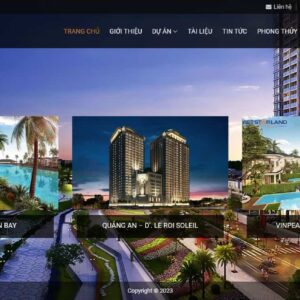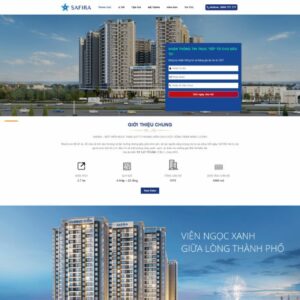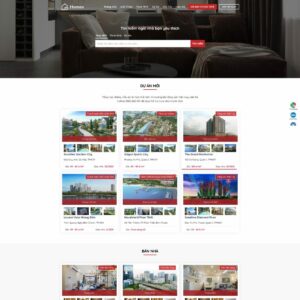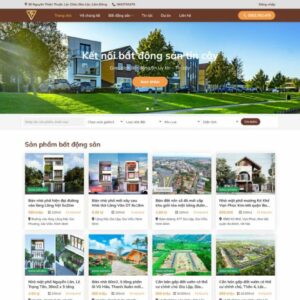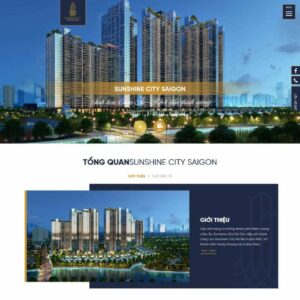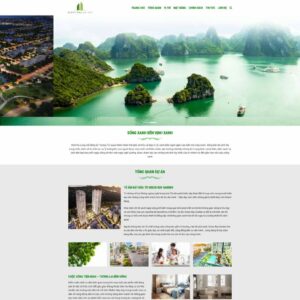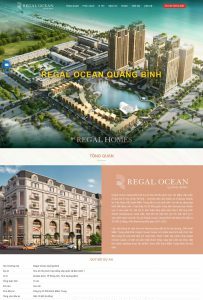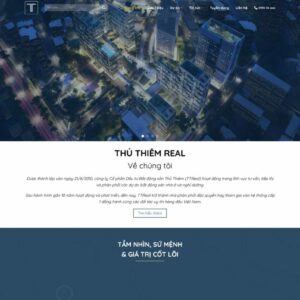
Looking for a professional WordPress real estate theme in Can Tho. Attractive design, easy to use, SEO optimized, and supports a variety of features.
WordPress Real Estate Theme 03 provides an optimal solution for real estate websites, easy to customize and user-friendly.
WordPress Real Estate Theme 56 offers an excellent user experience, is compatible with all devices, and allows easy customization of colors and fonts to match your brand.
WordPress Theme BDS 15 is the top choice for the real estate sector, offering a modern design and outstanding features.
WordPress Theme BDS 50 for real estate, featuring integrated interest calculation, SEO optimization, fast performance, and ease of use, suitable for hot real estate projects
WordPress Real Estate Theme 33 is a professional solution for businesses, helping to create an attractive real estate website that is easy to manage and optimized for SEO.
Explore WordPress Theme 43 for real estate companies, featuring an attractive design, SEO optimization, and suitability for businesses in the real estate industry.
CityTheme is a professional WordPress real estate theme optimized for landing pages, making it easy for you to promote and manage real estate projects effectively.
WordPress Theme BDS Greenbay is designed for real estate, creating impressive landing pages, optimized for SEO and user experience.
Explore the Novaland WordPress theme, the perfect choice for real estate websites with a modern design, outstanding features, and SEO optimization.
The Regal Ocean Quang Binh WordPress theme offers a beautiful interface and interactive features, making it easy for customers to connect and schedule appointments online.
The Thu Thiem Real real estate theme features a user-friendly interface, easy customization, and displays project listings with images and detailed information.
1. Benefits of Designing a Professional Real Estate Website
In the digital age, having a professional real estate website is essential for businesses to quickly and effectively reach customers. A real estate website is not only a platform for promoting projects but also a tool to facilitate transactions and provide detailed information about products and services. Designing an SEO-friendly real estate website helps improve rankings on search engines, increasing customer reach and establishing brand credibility.
2. Important Features of a Real Estate Website
To provide the best experience for customers, a real estate website needs to integrate all essential and modern features, helping customers easily search for and select suitable projects.
The real estate website interface should be attractive, with a scientific layout and sharp project images. Professionalism and clarity in presenting information will help customers perceive the quality of the business.
2.1. Attractive, User-Friendly Interface
The interface should be designed to be minimalist yet modern, focusing on displaying outstanding real estate projects. Using high-quality images and harmonious colors helps create an elegant and professional atmosphere. Call-to-action (CTA) buttons such as “View Details” and “Register for Consultation” should be placed in visible positions to encourage customer interaction.
2.2. Integrated Project Search and Filtering
The project search and filtering feature is crucial for a real estate website. The search system should allow customers to find projects by location, type (apartments, townhouses, land lots, etc.), price, area, etc. This feature helps customers easily find products that meet their needs, saving search time.
2.3. Detailed, Updated Project Information
Each real estate project needs a detailed information page that includes: project description, location, area, amenities, price, payment policies, actual images, and introduction videos. Information should be regularly updated to keep customers informed. This provides customers with a comprehensive view of the project, helping them make accurate decisions.
3. SEO-Friendly Real Estate Website Design Process
Designing an SEO-friendly real estate website is an important step for businesses to reach potential customers and increase conversion rates. A standardized design process will optimize user experience and ensure the website ranks high on search engines.
3.1. Conceptualizing the Interface
The interface design should focus on showcasing prominent projects, using sharp, high-quality images to create an impression. CTA buttons like “View Project Details” and “Register for Consultation” should be prominently placed to drive interaction. Neutral color schemes should be chosen to create a sense of luxury and professionalism.
3.2. Building Quality Content
The content on the website should focus on providing detailed information about projects, guides for buying and selling real estate, market news updates, and sharing investment experiences. Use relevant keywords such as “real estate website design,” “buy and sell properties online” naturally in the content to optimize for SEO. Sharing useful information will attract and retain customers while enhancing the business’s credibility.
3.3. Optimizing On-page SEO
Optimize SEO factors such as title tags, meta descriptions, headings, URLs, and ALT tags for images. Use internal linking between project pages and categories to increase connectivity and assist customers in their information search. Optimizing page load speed and user experience is also crucial for improving search engine rankings.
4. Trends in Modern Real Estate Website Design
Current trends in real estate website design focus on user experience, optimizing features and interfaces to create professionalism and attractiveness.
4.1. Minimalist Design, Focusing on Projects
The interface is designed to be minimalist, focusing on showcasing real estate projects with sharp images and dynamic videos. CTA buttons like “View Project Details” and “Contact for Consultation” should be placed in visible positions to encourage customer action.
4.2. Integration of Project Introduction Videos
Project introduction videos and living space experiences help customers gain a realistic and vivid view of the product. Videos not only enhance attractiveness but also help improve time spent on the page, thereby improving SEO rankings.
4.3. Mobile Optimization
The real estate website design should be compatible with all devices such as computers, smartphones, and tablets, allowing customers to access and search for information anytime and anywhere. This enhances user experience and increases potential customer reach.
5. Choosing a Reputable Real Estate Website Design Unit
To have a professional real estate website, businesses need to choose a reputable design unit with experience in real estate website design. This unit should provide comprehensive design, programming, and SEO optimization services to ensure the website operates effectively, attracts customers, and enhances user experience.
Conclusion
Designing an SEO-friendly real estate website is an optimal solution to help businesses reach customers, effectively promote projects, and enhance brand credibility. Invest in real estate website design today to establish your position and ensure sustainable growth in the real estate field.
Related Keywords:
- Real estate website design
- Buy and sell property website
- Real estate trading platform website design
- Real estate website design services

